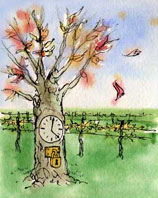
 Passage of the Connecticut Winery Act in 1978 sparked a rapid increase in the number of wineries in the state. Today, you are never more than 45 minutes away from a farm-based winery in the state of Connecticut. Further encouragement came by way of the Connecticut Wine Trail which was created in 1978 and encompasses all of the state’s now 18 wineries.
Passage of the Connecticut Winery Act in 1978 sparked a rapid increase in the number of wineries in the state. Today, you are never more than 45 minutes away from a farm-based winery in the state of Connecticut. Further encouragement came by way of the Connecticut Wine Trail which was created in 1978 and encompasses all of the state’s now 18 wineries.
Connecticut can be divided into four geographic zones. The Coastal Lowlands, forming the western portion of the multi-state Southeastern New England AVA, are the warmest part of the state due to the moderating influence of Long Island Sound. The Central Valley, influenced by the Connecticut River, is also a relatively warm area. Both the Western Highlands and the Eastern Highlands lie more inland at higher elevations and are typically cooler zones, with the former approved as a distinct appellation. Connecticut vineyards produce a variety of wines, ranging from Chardonnay, Cabernet Franc, Merlot, and Riesling, to French hybrids like Marechal Foch and Seyval Blanc. Some wineries produce sparkling wines, and even some sweeter Late Harvest wines made with Vidal grapes.
|
|
Current Feature
In the southern Blue Ridge Mountains of North Carolina and Georgia vineyards are small and few, yet the establishment of the Upper Hiwassee Highlands could bring much more.
[>] continue
Related Features
Alive & Well here

Riesling:
You are the matriarch, though your numerous offspring rarely match your noble nature. You teach us to
[>] continue
